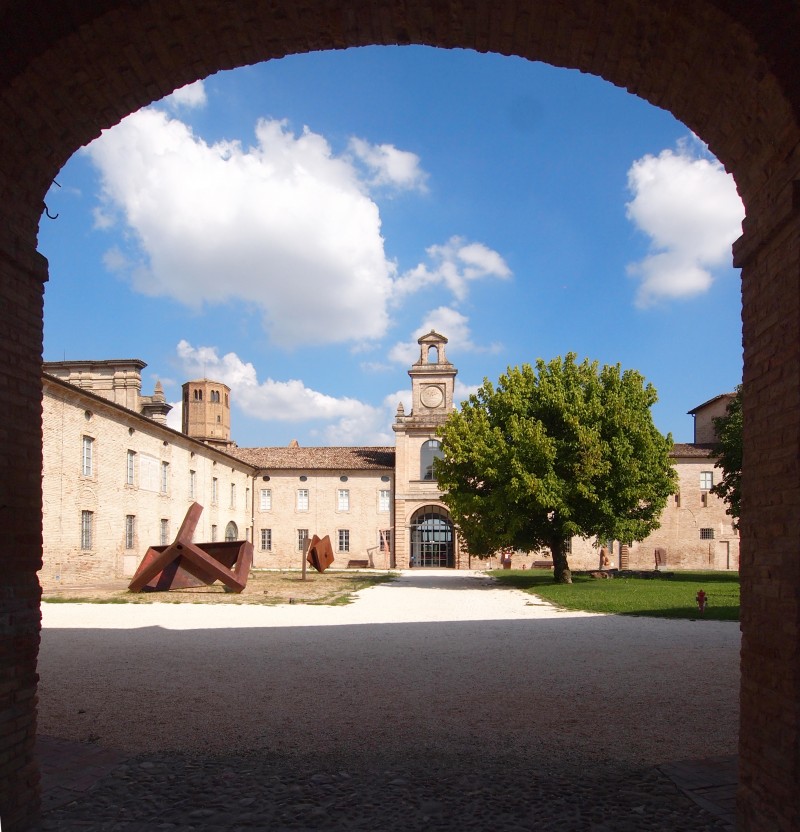The CSAC of the University of Parma presents Live Archive, a new path that winds through the Abbey of Valserena, completely redesigning the archive environments, no longer intended as places in their own right, but integrated with the exhibition space. The project was carried out thanks to the contribution of the Emilia Romagna Region (call POR-FESR EMILIA ROMAGNA 2014-2020. AXIS 5 Enhancement of artistic, cultural and environmental resources). Visits for the public will start on Tuesday 23 November, by reservation only, with the following times: Tuesday at 10 am; Thursday at 4 pm; Saturday at 10 am (for reservations write to: archivi_csac@unipr.it).
Live Archive is the title suggested by Jeffrey Schnapp, historian, designer and figure of reference in the field of digital humanities, who since 2015 has supported the CSAC in the process of rethinking his role. The project, conceived by Francesca Zanella, Elisabetta Terragni and Studio Terragni Architetti and Daniele Ledda xycomm and carried out with the involvement of all the staff of the university center, is based on the concept of ‘opening’ of the CSAC archive, which contains more than 12 million original materials of visual communication, of Italian artistic and design research from the first decades of the twentieth century. To strengthen the transversal nature of the heritage and its potential with respect to research, for the creation of unpublished narratives and for the comparison between different areas and communities, it was decided to reorganize the collections following an alphabetical order that subverts the chronologies and divisions by genres, delegating to the graphic communication that accompanies the path the task of bringing back to each of the five sections of CSAC – Art, Photography, Media, Project and Entertainment – the works kept in each environment. Graphic documents, images, posters, sketches ordered by projects in the drawer units coexist with objects, models, prototypes kept in boxes and displayed on shelves, re-proposing a constant visual rhythm given by the typical metallic storage devices, interrupted by a band of light that in each room indicates the place intended for the exhibition. The deposit thus becomes the place to allow the visitor to come into direct contact with works and documents, thus understanding the nature of the archive, its being a product and at the same time a generator of ties, connections and contradictions.
The CSAC archive will also be a place of experimentation for curators and conservators who will be able to propose new ways of reading the CSAC collections. The first opportunity is represented by the Second Times project by Eva Marisaldi, born as part of the residency program Through time: integrity and transformation of the work, which until February 28, 2022 will be in dialogue with the spaces of the Live Archive , through the dissemination of over sixty small prints on aluminum that reproduce fragments of the artist’s personal collection. The title of this project derives from a drawing by Paul Klee, exhibited within the exhibition Klee up to the Bauhaus, organized in 1972 by Arturo Carlo Quintavalle within what was then called the Institute of the History of Art and which shortly after would have given rise to the CSAC of the University of Parma. However, the term “second time” also refers to the temporal succession of a theatrical or cinematographic show, indicating an action that develops over time. Marisaldi has traced a path that winds between drawers and shelves, consisting of works created for the occasion and pieces taken from the CSAC collections. The path of Secondi Tempi also includes the unpublished video Lines, created in collaboration with Enrico Serotti, inspired and set up in an ideal dialogue with the work Sculpture no. 25 (1935) by Fausto Melotti, also kept at the CSAC. Finally, Eva Marisaldi took some works and projects from the archives of the university center – the shots by Tito and Sandro Spini that portray some examples of Dogon vernacular architecture and the project of an Islamic Arab national dress designed by Archizoom Associati for a competition organized by the Council of Ministers of the Libyan Arab Republic – going to create a specific focus on CSAC funds dedicated to Africa, a topic of great interest in the artist’s research following his travel experience in Madagascar in 2004.

